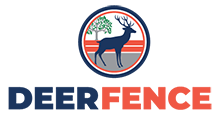Help Wildlife Rehab Centers
Posted on July 30 2020
MEDFORD TOWNSHIP, N.J. -- The sticky heat of summer marks one of the most challenging times of year for wildlife rehabilitators.
Cedar Run Wildlife Refuge can attest to that. Especially with the financial and physical burdens imposed by the COVID-19 pandemic, they find it more difficult than ever to care for their 16 orphaned or injured deer. That number alone is above average for a yearly herd.
On Instagram, they shared a photograph from within the wooden walls of the "Fawn Barn," an enclosure designed to separate deer from humans. A sight rarely seen by even the deer's closest caretakers, the image was paired with a plea for help.
"Can you chip in a few dollars to support the continued care of the animals that are counting on us?" it read.
As fawns approach adulthood, resources are spread thinner. The lifespan of a bag of formula shrinks from weeks to mere days. Vaccinations that once lasted a month become usurped in a single afternoon.
According to Mike O'Malley, Director of Operations at Cedar Run, it costs $477 to care for a single fawn from admission to release.
Thankfully, their plea helped. O'Malley says they raised more than $5,000 from the community. The wildlife hospital is already a non-profit that receives no state or federal funding.
"This operation is completely fueled by the community," said O'Malley.
That community interaction is a two-way street for Cedar Run. In addition to its rehabilitation efforts, they take pride in habitat preservation and nature education. Despite the ongoing COVID-19 pandemic, summer camp is still taking place and connecting youth with such educational opportunities.
O'Malley was initially worried that COVID-19 would drive down participation within the community. However, the opposite occurred. He says patient admittance has increased 22% for the refuge, which already cares for 5,000 wild animals yearly.
While there is no cost to admitting an orphaned or injured animal, well-meaning individuals should exercise great caution and proper judgment when detaining wildlife.
"The way that fawns are raised is extremely different from human babies," said Lori Swanson, Director of Wildlife Rehabilitation. She notes that mothers may leave their fawns for 12 hours at a time in order to keep predators away. If this is the case, fawns should not be captured and brought to Cedar Run.
However, many fawns are orphaned at the cost of human interaction, such as motor vehicle accidents.
"Those babies, we absolutely need to get in and get care because they're not going to be able to survive on their own without mom," Swanson said.
It is the mission of Cedar Run to offset those negative human interactions, balancing the scale of our ever-delicate ecosystem.
Animals under the immediate care of the wildlife hospital, such as these 16 fawns, are not visible to the public. However, Cedar Run does provide a public environment for visitors to discover wildlife that are otherwise unreleasable due to a permanent disability.
They plan to release this herd of deer once they have matured, which should take place around September.
Story re-posted from ABC 6.
